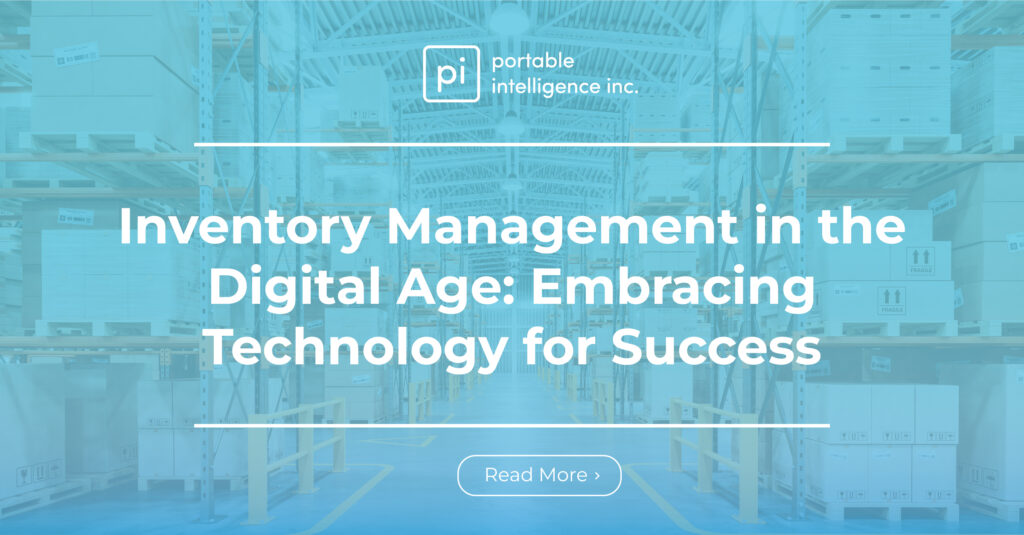What is a Paperless Warehouse?
The term paperless warehouse refers to using of all digital automation and record-keeping in a warehouse. It’s about much more than simply not using paper.
It’s about automating a warehouse system completely with various technologies that minimize mistakes, reduce inefficiencies, reduce overall waste, and streamline operations.
In this context, paperless typically refers to making the warehouse logistical processes digital. This normally means implementing a WMS that automates the warehouse. These online systems can also be connected to other processes in the supply chain via IoT (Internet of Things) devices.
Although there are still many who resist changing to a paperless process as the initial cost can sometimes be an obstacle, there are many benefits to switching in the long term.
6 Paperless Warehouse Benefits
- Improve Warehouse Efficiency
In paper-based systems, manual logs are used to track performance and productivity, and these are very prone to human error and take time. With a paperless system, visibility is improved throughout the warehouse and it will ensure you always have access to accurate and up-to-date data.
There is a very high risk of inefficiency and errors when everything is done manually.
From misplaced papers to incorrect logging, manual management is ineffective and slow. Automated digital warehouse management systems (WMS) provide accurate, real-time data with on-floor mobile devices and digital record keeping. At all times, you’ll know exactly where trucks, shipments, and items are, which increases end-to-end visibility throughout the supply chain radically.
As these systems are much less prone to human error, it means more accurate and faster reporting. This will result in any potential issues that arise being handled in real-time leading to fewer delays and more precise data entries.
- Improve Productivity
Although the initial cost to switch to automation may seem high, doing this will save a substantial amount of resources over time. Stationary and printers cost money, and keeping track of piles of paperwork is tedious and time-consuming. Doing it digital reduces the requirement for those resources and lets technology do the work.
The amount of resources and time that is required for a paper-based warehouse system can be huge. It takes printers, paper, and a team that can keep track of and handle the paperwork. It also means finding files and individual pieces of paper manually if there are questions or issues with an order. All of this takes up a huge amount of time, which could be better spent elsewhere by employees.
When using a WMS system, a company can increase productivity by reducing, or even eliminating, the costs associated with paper-based management. The paperless approach also minimizes mistakes and helps correct issues in real-time, with highly accurate data entry and fewer information delays.
- Improve Customer Service
One benefit of paperless systems is that they allow you to manage the movement of goods between multiple locations. It can be difficult to track products’ destination, shipping status, and location manually, even for highly experienced management teams. Time can be lost when you try to pinpoint who the recipient will be, when goods will be dispatched, and where they are located.
In paper-based environments, it can be chaotic if what’s physically available in the warehouse and the recorded inventory don’t match. This can result in your customer service suffering, as the flow of products is not accurately tracked. When a customer purchases a product that turns out to be out of stock, they may be kept waiting and this will lead to dissatisfaction.
A WMS system will enable you to track the movement of products into and out of the warehouse accurately, ensuring that inventory records are always accurate.
Improved productivity and visibility have a direct impact on the overall customer experience. A warehouse management system can manage the flow of products better, so you’ll know exactly where your inventory is at all times. This will result in you being able to offer clients improved tracking with more accurate timelines and enable you to maintain optimum stock levels at all times.
- Save Space
Think about how much space your paperwork takes up. If you use physical paperwork, you need space for all your files. You could utilize that space much better and it could possibly become an office, be used to store additional products, etc.
WMS systems keep track of item locations and identify the best places in the warehouse to store them. Manual processes rely on operators designating locations for goods received. If employees do everything manually, it may be that location selections are made based on employee preference rather than what would be best for the products. Operators may also not be able to access every position, resulting in some storage space going to waste.
- Reduce Costs
When you convert to a paperless warehouse, substantial cost savings can be achieved. Your spending on extra printers, ink, and paper will be reduced. You also won’t require additional storage space or filing cabinets for all the paperwork. As everything will be digital, it won’t consume any of those resources. The price of a WMS is still better than spending on those expenses continually every month, even if you take the cost of adding paperless software and a system into account.
- Environmental Impact
Going paperless will also result in you becoming more environmentally friendly. It will enable your company to lower its carbon footprint and become greener. Nowadays, going green is important for companies as it shows their customers they are committed to the environment.
Is a Completely Paperless Warehouse Possible?
It is entirely possible to have a completely paperless warehouse, and many businesses are already moving in this direction. As a warehouse is the pivot point of the supply chain, automating your warehouse operations is crucial to streamlining your entire logistics process.
The initial cost of moving to paperless may be an obstacle, especially for smaller companies. Making the move to digital is however necessary to compete in the long-term. The future of warehousing is total automation as this means keeping up with increasing customer demands for speed, efficiency, and transparency.




